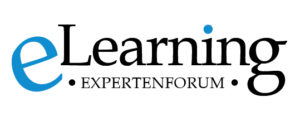Learning Management Systems continue to be the central learning infrastructure in German-speaking countries. However, in order to not lose anything of relevance, LMS must constantly evolve in order to support for example new approaches and technologies. At the same time, not every development ultimately prevails on the market, i.e. it must always be weighed up which trends really have practical relevance. In the context of the purchasing consultant, the eLearning Journal asked four experts about their experiences and forecasts on current trends in the LMS environment.
Trend: Cloud

Cloud-based LMS have become increasingly important and widespread in recent years. Simple scalability, uncomplicated implementation or lower start-up and maintenance costs are just some of the arguments in favor of a cloud-based LMS. However, especially in Germany, concerns about data protection or server location can make the use of a cloud LMS more difficult. So how widespread are cloud-based LMS in German-speaking countries and what potential does this trend have for the coming years?
In order to be able to answer these questions, one should first think about what “cloud” means in this context. “Cloud is a very elastic term. A real cloud environment or rather a private cloud, there are very many views,” says Julien Boppert of Magh und Boppert GmbH. “In principle, customers understand that it means to obtain their software from the Internet without local installation. Almost every provider now has a corresponding offer”.
According to this definition, a cloud-based LMS has a number of advantages. “In addition to the always available and location-independent access using all end devices, there are other aspects such as cost and time savings during implementation and maintenance or the elimination of annoying software updates,” says Nicole Nagel of WTT CampusONE GmbH. Nevertheless, according to Nicole Nagel’s experience, cloud-based LMS still seem to be far from widespread.
However, the trend is positive and, especially in larger companies, the prevailing reluctance to cloud solutions is increasingly disappearing. Dr. Daniel Stoller-Schai of CREALOGIX AG shares a similar view. “I don’t know what the reasons might be today not to rely on a cloud-based LMS,” he says in his assessment of the current situation. “Cloud-based LMS are becoming the standard form of use. On-premise solutions are too complex and ultimately too expensive to maintain and operate.”
Trend: Extended Enterprise
Typically, LMS still concentrates primarily on the employees of a company – external target groups such as partners, suppliers or customers are generally not taken into account. It can be worthwhile for companies to consider these external target groups in the learning processes, for example because the development costs of training measures can be partially refinanced or better customer loyalty can be achieved.
At least that’s the theory. But is the use of an Extended Enterprise LMS also worthwhile in practice? For Onno Reiners of M.I.T e-Solutions GmbH, the answer to this question depends on their own cost-benefit analysis: “To what extent do digital or digitally enriched communication and training measures pay off for external target groups compared to purely analogue or classical methods and media? Which non-quantifiable advantages such as image enhancement, brand strengthening or corporate branding effects does an Extended Enterprise LMS have?”
CITATE
 “There are still some trends to be mentioned in modern, hub-based learning platforms: These include artificial intelligence and recommendation engines for the implementation of adaptive, personalized learning offers, the use of skills management in combination with standardized job profiles and nationally or internationally recognized certificates, as well as the implementation of learning record stores and learning relation managers to record learners’ educational histories and point out links to other similar persons”.
“There are still some trends to be mentioned in modern, hub-based learning platforms: These include artificial intelligence and recommendation engines for the implementation of adaptive, personalized learning offers, the use of skills management in combination with standardized job profiles and nationally or internationally recognized certificates, as well as the implementation of learning record stores and learning relation managers to record learners’ educational histories and point out links to other similar persons”.
Dr. Daniel Stoller-Schai, CREALOGIX AG
But how can the advantages or added values of an Extended Enterprise solution look like? “Integrating the entire business network into the training strategy can offer competitive advantages in many areas, e.g. if errors are avoided by integrating cooperation partners and suppliers, which leads to a lower service volume and thus to a reduction in costs. Another example of a valuable and meaningful extension of the further training strategy to external companies is, for example, the guarantee of safety regulations at external companies on the factory premises. Here, external employees can be trained quickly and easily in advance and familiarized with local conditions,” says Nicole Nagel.
Julien Boppert is even less critical, because in his opinion an Extended Enterprise solution is always worthwhile. “There comes a point at which a new target group is to be trained outside the company and then the purchase pays off. The only important thing is that the selected LMS can include other target groups without any problems,” is the reason for his assessment.
Against this background, it is not surprising that the experts assess the potential of this trend as positive. “The potential is great. Already now M.I.T regularly develops content for external target groups of its customers, be it promoters for companies from the consumer electronics industry, distribution partner networks for the automotive and logistics industry or for independent travel agents and consultants in the travel and transport industry. All these solutions have to be rolled out and evaluated; this will only work with LMS with dedicated learning offers for external providers and corresponding possibilities for measuring success plus incentive systems,” predicts Onno Reiners. Julien Boppert, who also predicts an increasing spread of Extended Enterprise LMS in the next three years, is of a similar opinion. In his opinion, companies should keep an eye on Extended Enterprise right from the start, especially when making new acquisitions.
Trend: Gamification
While the topic of gamification in in-company education was still largely ridiculed three to four years ago, gamification elements seem to have spread rapidly, especially in the international, but also in the German-speaking market. More and more LMS have therefore integrated selected gamification elements. The plate of the elements used is large and ranges from simple point systems and badges to ranking lists or leaderboards to entire reward systems.
CITATE
 “LMS typically focuses on the employees of a company – external target groups such as partners, suppliers or customers are generally not taken into account. It may well be worthwhile for companies to take these external target groups into account in the learning process, for example by partially refinancing the development costs of training measures or improving customer loyalty.
“LMS typically focuses on the employees of a company – external target groups such as partners, suppliers or customers are generally not taken into account. It may well be worthwhile for companies to take these external target groups into account in the learning process, for example by partially refinancing the development costs of training measures or improving customer loyalty.
Onno Reiners, M.I.T e-Solutions GmbH
The experts surveyed are also largely convinced that gamification elements have become significantly more relevant in the context of LMS in recent years. “Relevance is increasing all the time. This is also logical, because the employees want to experience something. The fun must not come too briefly. The time of boring learning is finally over. Gamification is supposed to be the attraction that a learner likes to come back”, Julien Boppert sums up the general tenor.
This development is not surprising, as gamification should have a positive effect on the motivation of learners, which is something like the “Holy Grail” of in-company education. “’Man is an entire man only there where he plays.’, Schiller once said. He was right. Learning, which is connected with games, fun and – yes – also with competition, is more attractive for most than the intrinsically motivated self-learning of Web Based Trainings. In this sense, gamified elements in learning offers are certainly relevant,” emphasizes Dr. Daniel Stoller-Schai the importance of gamification for learning motivation.
But just because an LMS has integrated badges or point tables, this does not mean that such functions automatically increase the motivation of learners. “Our experience shows that many Learning Management Systems have still implemented quite technocratic forms of gamification, which also quickly lost their appeal. After the 10th mission, the 50th badge and the 100. rating, the potential is exhausted. Peer ratings remain interesting. I see where I stand in comparison to others.
To offer gaming experiences like in current games is usually too expensive for the production of digital learning offers”, Dr. Daniel Stoller-Schai summarizes the limitations of these functions. Nicole Nagel has a similar view: “Gamification must never be an end in itself and must always be directly related to the content and thus to the didactic concept”.
So what relevance do integrated gamification elements have for the LMS market in the coming years? According to the experts surveyed, the release of such elements depends primarily on both companies and providers dealing intelligently with badges and the like, so that learners also gain added value compared to the “boring” learning unit.
“This depends on the manufacturers of the learning platforms and authoring systems. Gamification components would be interesting, if they could be flexibly assembled by administrators and users. In this way it could be avoided that the same gamification elements “wear out” too quickly, says Dr. Daniel Stoller-Schai, as well as gamification elements can be relevant for LMS and authoring tools in the long term.
CITATE
 “At present, SaaS solutions are not yet in widespread use in companies, but their relevance is increasing and the reluctance to cloud solutions, which initially prevails in larger companies in particular, is increasingly disappearing. From our perception, the trend will rather develop into a ‘mass movement’.”
“At present, SaaS solutions are not yet in widespread use in companies, but their relevance is increasing and the reluctance to cloud solutions, which initially prevails in larger companies in particular, is increasingly disappearing. From our perception, the trend will rather develop into a ‘mass movement’.”
Nicole Nagel, WTT CampusONE GmbH
Trend: Adaptive learning systems
As already mentioned, motivation to learn is another major challenge when it comes to successful eLearning. One way to increase the motivation to learn is a personalized learning process. If training materials and courses for an employee have a concrete connection to and added value for daily work, the willingness to get to grips with the subject increases. Adaptive Learning Systems, the personal learning environment or the use of artificial intelligence are all approaches to enable, support and automate such personalized learning.
At least that’s the theory. But what experiences have the interviewed experts made with Adaptive Learning Systems in practice? “At present, adaptive learning systems are still strongly limited to learner-controlled adaptivity of learning opportunities, e.g. through profiling information or tests that lead to more or less rigid learning paths or learning path recommendations or favorite functions with which learners can put together their own curricula.
The application of algorithms for self-adaptive learning systems is in the testing phase in German-speaking countries with many funded pilot projects,” says Onno Reiners, summarizing his previous impressions of the situation in German-speaking countries. Dr. Daniel Stoller-Schai has similar things to report: “So far we have not seen a ‘truly adaptive’ system in German-speaking countries. An adaptive system measures itself against the specifications of a job profile with individual skills and a personalized development path. For this, LMS also requires the use of AI. The first tentative approaches come from the Anglo-Saxon region.”
While the current situation of adaptive learning systems is seen by the experts interviewed as rather sober, they nevertheless seem to see at least tentative potential for the coming years. “Adaptive learning systems will be an obvious building block in the digitization strategies of many companies. I assume that within the next three years we will have many learning management systems that will not only be passive containers with active management by administrators, tutors or education managers and of course the learners themselves, but will gradually offer more and more system-intelligent, active components for reacting and adapting to learning behavior,” predicts Onno Reiners. Dr. Daniel Stoller-Schai also takes a similar position: “For years, co-writing, collaborative filtering and many other functions were discussed at universities. Meanwhile, these have established themselves. Adaptive learning systems will be similar. In three years’ time, customized and personalized learning settings will be implemented in learning platforms. For learning systems to survive in the long term, it is imperative to move from ‘one size fits all’ to personalized learning”.
Trend: xAPI
The often quoted 70:20:10 formula sums up what today is actually widespread knowledge that formal learning is only one aspect of the learning process. However, although the exchange with colleagues and informal learning are indispensable, it is notoriously difficult for companies to actively and adequately support and document these aspects of the learning process.
CITATE
 “Another trend is certainly 3D printing. Especially in technical professions, practical exercises can be made more tangible and clearer. Simply print out your result and test it or assemble the following task, it could then read”.
“Another trend is certainly 3D printing. Especially in technical professions, practical exercises can be made more tangible and clearer. Simply print out your result and test it or assemble the following task, it could then read”.
Julien Boppert, Magh und Boppert GmbH
with colleagues and informal learning are indispensable, it is notoriously difficult for companies to actively and adequately support and document these aspects of the learning process. With the new standard xAPI it should be possible to record the different and especially informal learning experiences of employees, so that knowledge acquired or new competences acquired outside the company’s own learning ecosystem, can also be credited and considered.
However, according to the experience of the experts surveyed, xAPI seems to have difficulties in practice despite these advantages. “xAPI is already used for one or the other project and can be used quite sensibly. However, there is not yet a widespread use of the area,” says Julien Boppert. Nicole Nagel also makes a similar comment: “At present xAPI is not yet a real topic for customers, even though the topic of networked learning ecosystems has very valuable and interesting aspects for education.”
According to Dr. Daniel Stoller-Schai, the generally low interest in xAPI on the part of companies means that the topic has so far been quite irrelevant for LMS. “xAPI is not really relevant for an LMS, which is why we have not seen any significant penetration here in recent years. The architecture of learning environments is developing into open systems and so-called Learning Record Stores (LRS) are establishing themselves for the storage and analysis of learning data. Here we work with Big Data and AI, which is why other technologies are used,” he believes. which is why other technologies are used,” he believes.
But despite the perhaps sobering current situation, the surveyed experts see a potential for xAPI in the coming years, because companies must inevitably adapt to the learning behavior of their employees, which is no longer limited to the company’s own offerings. Julien Boppert therefore estimates that the relevance of xAPI will increase: “There is potential, expansion is desired and useful. Learning should not and does not necessarily have to take place on one platform alone. The Internet is full of good offers and learning content. Ultimately, it is only important for companies to be able to hold on to the results at home. Otherwise, educational pathways cannot be traced and reported. Because also the employees, who want to build up and supervise the training paths, learn how the employees learn “on their own”. A comparable position is held by Dr. Daniel Stoller-Schai, who considers xAPI particularly important from the point of view of learners in the future. “xAPI is a key component for open learning architectures. On the content side xAPI is central, on the LMS side, as already mentioned above, the interpretation is rather low. In future, it will be important that learners’ training data do not disappear in an ‘in-house’ system, but remain with the learner. The idea of lifelong learning plays an important role here. It is a fact today that employees change employers more often and reskilling and upskilling are central to employability,” he predicts.





